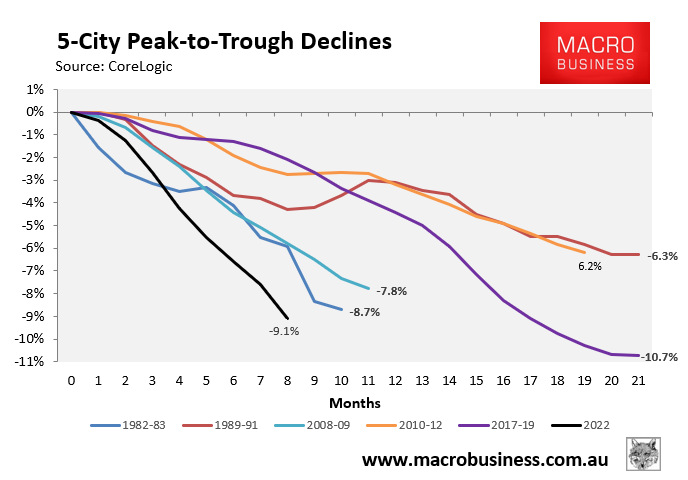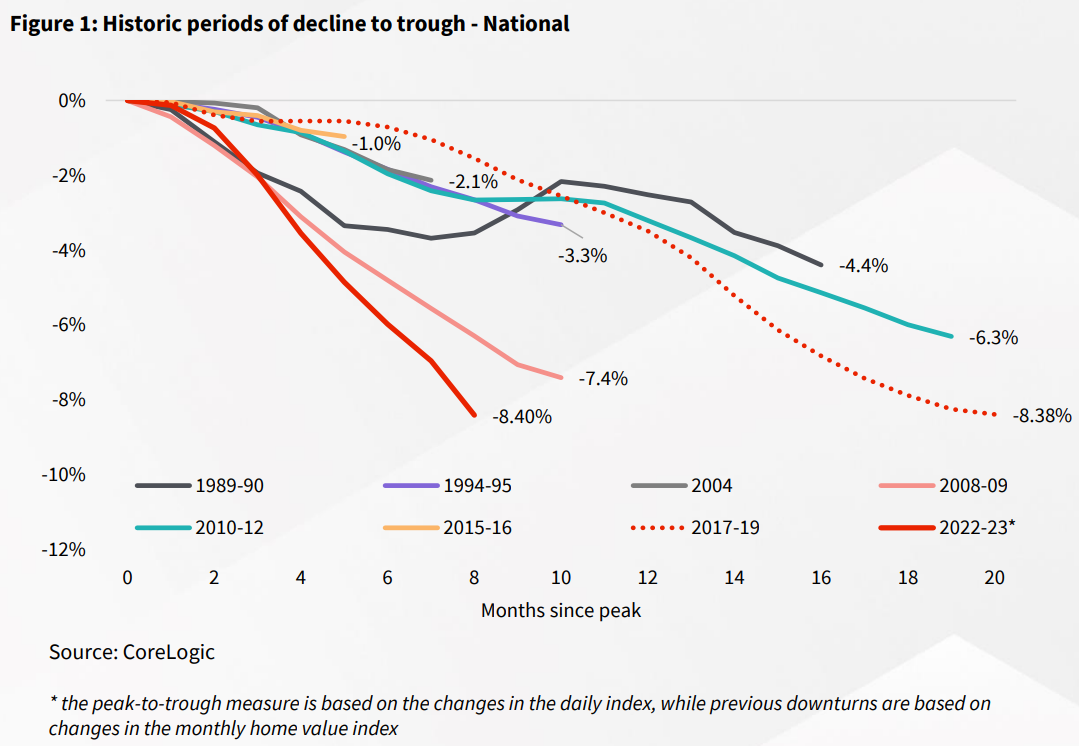I noted yesterday how CoreLogic’s daily dwelling values index, which measures price changes across the five major capital city markets, will likely record its biggest ever house price fall by the end of February, eclipsing the record 10.7% decline between 2017 and 2019:

It turns out that national dwelling values – encompassing both the combined capital cities and regions – have already recorded their steepest ever decline, after falling 8.4% from their peak, according to CoreLogic:

CoreLogic stated that “the result takes the national housing downturn into new territory, breaking the previous record in peak-to-trough declines, when home values fell -8.38% between October 2017 and June 2019”.
The current “record breaking” national decline is also the steepest on record, taking just nine months versus 20 months over the 2017 and 2019 correction.
CoreLogic expects further price falls in the months ahead owing to “the recent cycle of rate hikes that have risen at the fastest pace on record”.
“A 300-basis point increase in the underlying cash rate over just eight months has resulted in a rapid reduction in borrowing capacity, lowering the amount buyers can offer for homes. In addition to constrained borrowing capacity, higher interest costs may be dissuading potential buyers altogether”, CoreLogic said.
“The underlying cash rate is likely to see further increases in 2023, with market expectations pricing a peak of around 4%, while the median forecast from Australian economists is lower at 3.6%. Ongoing increases in interest rates will further erode the borrowing capacity, and likely prolong the country’s housing downturn until interest rates stabilise”.
“Australians are also more indebted today than through historic periods of rate rises, with the latest Reserve Bank of Australia’s estimate of housing debt-to-income ratio sitting at 188.5%. A decade ago this figure was 162.0% and in 2002 the ratio was 130.2%. Higher household indebtedness may have increased the sensitivity of housing values to interest rate rises”, CoreLogic warned.
A 15% to 20% peak-to-trough decline in Australian house prices is expected by most commentators. This looks about right to me, with values likely to continue falling into Q3 this year.
I still expect house prices to begin rebounding in Q4 after the Reserve Bank of Australia begins cutting interest rates. But there is also the outside risk that the fixed rate mortgage reset will cause a large volume of forced sales that pushes values even lower.

